Understanding Bed Bug Mortality: Key Factors and Duration
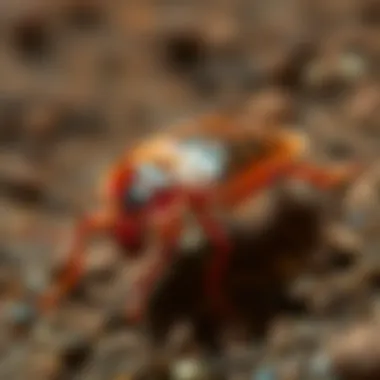
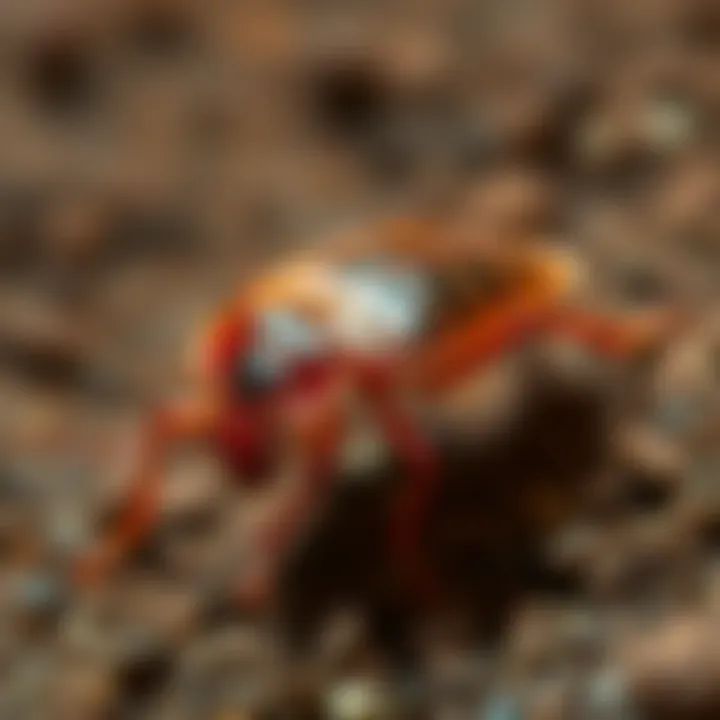
Intro
When we talk about unwanted guests, bed bugs surely take the cake. These tiny creatures, often mistaken for mere nuisances, can disrupt our peace and bring havoc to our homes. Understanding the journey of these pests, particularly their lifespan and the factors influencing their mortality, is crucial for homeowners and pest control experts alike. In this article, we break down the complexity surrounding bed bugs to provide insights that can aid in effective management strategies.
Understanding Pests
Definition of Pests
Pests are organisms that adversely affect human activities or living conditions. Specifically, bed bugs (Cimex lectularius) are small, wingless insects that primarily feed on the blood of humans and animals. Their nocturnal habits and ability to reproduce rapidly make them a significant concern. Understanding what categorizes an insect as a pest helps underline the importance of proactive measures in pest control.
Importance of Pest Identification
Identifying bed bugs is a crucial step in tackling an infestation. They are small, usually about the size of an apple seed, and often hide in cracks and crevices. Recognizing early signs, like small blood spots on sheets or an unpleasant, musty odor, can provide a head start in combatting these pests. Awareness of their hiding places, such as mattresses, furniture seams, and behind baseboards, is paramount.
"Identifying pests accurately can save time, money, and a lot of headaches in the long run."
Prevention Techniques
Home and Garden Preventative Measures
When it comes to averting bed bug infestations, prevention remains far better than cure. Here are some effective strategies:
- Regular Cleaning: Vacuuming often, especially in vulnerable areas like bedrooms, can eliminate potential hiding spots.
- Clutter Management: Keeping areas tidy reduces the number of places where bed bugs can reside.
- Protective Covers: Using bed bug-proof mattress encasements can trap these pests, cutting off their food supply.
Seasonal Prevention Tips
As seasons change, so do the behaviors of pests. In warmer months, bed bugs may become more active. Here are a few tips for these seasons:
- Inspection After Travel: Check luggage and belongings carefully when coming back from trips to avoid bringing home unwanted souvenirs.
- Outdoor Precautions: If spending time outdoors, particularly in shared spaces like camping grounds, be wary of the risks of bringing bed bugs back inside.
Eco-Friendly Pest Control Solutions
Overview of Sustainable Practices
Increasing concern about chemical pesticides has led many to explore eco-friendly pest control methods. It’s essential to consider practices that not only tackle the problem but do so without causing harm to the environment. Integrated Pest Management (IPM) promotes a combination of strategies, including biological control, habitat manipulation, and education.
Natural Remedies and Their Effectiveness
Sometimes, nature holds the key to controlling bed bugs. Several natural remedies have been tested for their effectiveness:
- Diatomaceous Earth: This fine powder can be dusted in areas where bed bugs hide; it dehydrates and kills them upon contact.
- Essential Oils: Certain oils, such as lavender or tea tree, can act as deterrents. They can be diluted and sprayed in affected areas for better results.
Through this informative narrative on bed bugs, we’ve set the stage to delve deeper into their lifespan and mortality factors. Keeping these insights in mind can empower homeowners and pest control professionals alike in their ongoing battle against bed bugs.
Prolusion to Bed Bugs
Bed bugs have gained notoriety in recent years, cropping up in homes, hotels, and other spaces, alarming many homeowners. Understanding their existence is crucial. This familiarity is essential not only for immediate relief but also for preventing potential infestations. Knowledge empowers housewives and homeowners alike to tackle not just the visible signs of bed bugs but also the nuances that contribute to their lifecycle and population growth.
Knowing the ins and outs of these pests provides benefits, such as unveiling why they are so tough to eliminate and clarifying their behavioral patterns. Therefore, this section kicks off an exploration of bed bugs, including a look at their life stages, how they thrive, and what makes them a persistent nuisance.
Defining Bed Bugs
Bed bugs are small, wingless insects that are notorious for feeding on human blood. Their adult size is roughly a quarter-inch long, which makes them resemble apple seeds. Their bodies are flat, and they have a rusty red color. This coloration shifts a bit after feeding. Eggs are even tinier, about the size of a pinhead, lending them a stealthy reputation.
These pests are primarily nocturnal, meaning they prefer to emerge at night while their hosts are asleep. They hide within the crevices of mattresses, bed frames, and even furniture. Their resilient nature allows them to survive in a range of conditions — it's not just about the warmth of your home's interior; they can endure extended periods without food, hiding away for months at a time before the opportunity to feed emerges again.
Understanding the Impact of Bed Bugs
Their impact extends beyond mere bites and itches. Bed bugs can lead to significant anxiety and distress. The realization of sharing one's sleeping space with such pests can wreak havoc on mental health. This incessant worry often leads to erratic sleeping patterns.
A widespread misconception is that bed bugs are linked to unclean environments; in reality, they can infiltrate even the most pristine homes and establishments. They hitch rides on personal belongings, making it easy for an infestation to occur virtually anywhere. Furthermore, the economic burden associated with extermination services can be substantial, not to mention the emotional toll it takes on those affected.
In summary, comprehending the multifaceted nature of bed bugs provides insights into why they have become a common pest issue. Households equipped with knowledge are better prepared to deal with any unwelcome guests crawling under their sheets.
Understanding Bed Bug Lifespan
Understanding the lifespan of bed bugs is crucial for effective pest control and management. These pesky pests have a remarkable ability to thrive in a variety of environments, which can obscure their presence and make them difficult to eliminate. By grasping the lifespan of these bugs, homeowners can take proactive measures to prevent infestations and respond appropriately should they find themselves facing an invasion.
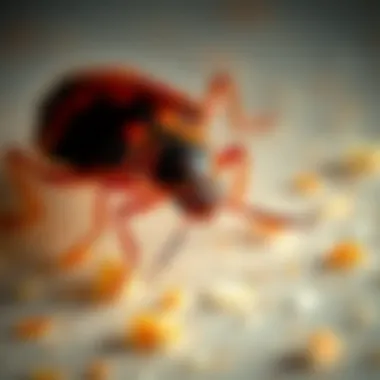
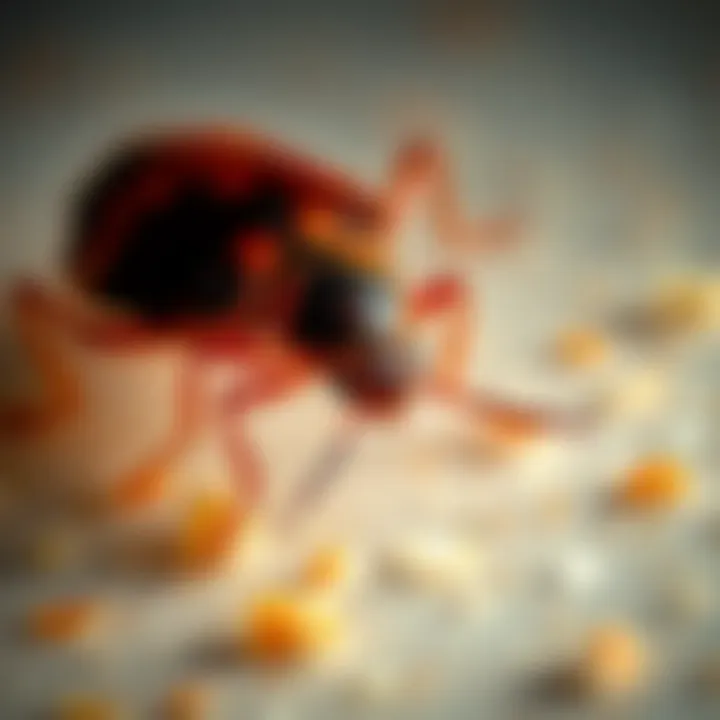
The lifespan of bed bugs is divided across different life stages: eggs, nymphs, and adults. Knowing the duration each phase lasts not only adds context to their reproductive cycle but also highlights the resilience and tenacity of bed bugs. For instance, understanding the timing of each stage can help in choosing the right intervention methods at critical points, ensuring a higher success rate in eradication efforts.
Life Cycle Stages
Eggs
The first stage of bed bug development is the egg phase. A single female can lay up to five eggs daily, and these eggs can survive in various conditions. One key characteristic of bed bug eggs is their small, white, and oval form, roughly the size of a pinhead. This makes them easily overlooked, hence their disdainful ability to propagate infestations rapidly.
Another unique feature of bed bug eggs is their resilience; they can withstand varying temperatures, but extreme heat or cold can penetrate their fragile shells and cause mortality. This aspect is essential for pest management strategies, as eggs protect juvenile bed bugs until they hatch. If not addressed, the uninterrupted growth of a population can lead to larger pest issues.
Nymphs
Upon hatching, the bed bugs enter the nymph stage. Nymphs are smaller and lighter than adults, and they go through five molts before reaching maturity. One of their defining traits is their need for a blood meal after each molt for proper development. This life stage is mostly detrimental because nymphs are often harder to detect, due to their smaller size and habit of hiding in cracks and crevices.
The nymph stage can last anywhere from a few weeks to several months, depending on environmental conditions and access to blood. The unique aspect of nymphs is their development can be interrupted by starvation, significantly impacting the population's growth timeline. Knowing this helps in identifying when to act for control and increases the effectiveness of treatment strategies.
Adults
Finally, the adult bed bugs come into play. These are the most notorious in the life cycle due to their visible size and ability to reproduce prolifically. Adult bed bugs average between 4-5 mm in length and can live several months to over a year, depending on factors such as food availability and environmental conditions.
They possess the ability for both fertilization and laying eggs, making them a formidable adversary in an infestation scenario. If left unchecked, adult populations can grow exponentially, leading to widespread discomfort and annoyance. Their awareness is critical for pest control, as targeting adults can slow down or halt further infestation quickly.
Average Lifespan in Different Stages
The lifespan of bed bugs varies significantly between stages. Generally, eggs take about six to ten days to hatch. Nymphs may mature within four to five weeks, given optimal conditions. Adult bugs can live for several months, sometimes even a year, offering potential for long-term survival of the species.
Understanding these timeframes is vital for homeowners to implement timely pest control measures and for pest control professionals to strategize their approaches effectively. This knowledge not only helps in tackling current infestations but also lays a foundation for preventive measures in the future.
"An ounce of prevention is worth a pound of cure." This old saying rings especially true when it comes to managing bed bug populations and ensuring they do not become a permanent fixture in your home.
For additional information on bed bug life cycles and management tactics, visit CDC or check out EPA.
Factors Influencing Bed Bug Life Expectancy
When it comes to managing bed bugs, understanding the factors influencing their life expectancy is key. Knowledge in this area can be a game changer for homeowners and pest control professionals alike. By dissecting how different elements affect the lifespan of these pesky critters, one can develop effective strategies for eradication and prevention.
A few critical components come into play when discussing bed bug life expectancy. Heat exposure, dietary habits, and environmental conditions like temperature and humidity play significant roles. Each of these elements doesn’t just impact individual bed bugs but also the efficacy of control measures adopted.
"Prevention is better than cure" is a phrase that rings true when tackling bed bug issues. Delving into the dynamics of mortality factors is not only enlightening but also arms individuals with knowledge they can use to nip infestations in the bud. With this in mind, let’s break down the specifics of each factor.
Heat Exposure
Bed bugs, like many living organisms, are affected by temperature. High heat can be lethal to them, and understanding the method of heat exposure can significantly impact mortality rates. Research indicates that bed bugs start to suffer damage at around 113°F (45°C). Prolonged exposure above this threshold can lead to immediate death. For example, professional pest control treatments often utilize temperatures ranging from 118°F (48°C) to 135°F (57°C) to ensure a high kill rate.
However, it is crucial to remember that not all heat applications are equally effective. Spotlighting the contrast, if the heat is applied unevenly or not held long enough, some bed bugs may escape due to their ability to hide in crevices. This highlights the importance of employing thorough methods that can maintain consistent temperatures throughout infested areas.
Starvation and Its Effects
Another fascinating aspect of bed bug mortality is their ability to survive prolonged starvation. While most pests perish without a food source relatively quickly, bed bugs can live several months without feeding—up to about 5 months under optimal conditions. During this time, their metabolism slows down, allowing them to conserve energy. However, this doesn't imply that they will emerge unscathed. Prolonged starvation eventually leads to weakness, decreased reproductive rates, and, ultimately, death.
Understanding their resilience can aid in devising planned intervention strategies. For instance, letting certain areas go untouched for a while may encourage bed bugs to venture out in search of food, making them more susceptible to treatments.
Temperature and Humidity Levels
Environmental conditions significantly influence the survival of bed bugs. Both temperature and humidity have direct impacts on their biological processes. For instance, optimal conditions for bed bug reproduction fall within the range of 70°F to 80°F (21°C to 27°C). However, an increase in humidity can lead to a rise in their life expectancy due to reduced water loss.
On the flip side, excessive humidity can also create ideal breading environments for mold or other bacteria, which can harm their eggs and nymphs. Thus, maintaining a balance in temperature and humidity levels in your space is critical. A stable environment that neither gets too hot or cold—and where humidity does not swing widely—can be your best defense.
In summary, recognizing the various factors affecting bed bug mortality can equip homeowners and pest control personnel with better tools and knowledge for dealing with infestations. By managing temperature, understanding their feeding habits, and maintaining controlled environments, one stands a better chance at exorcising these unwelcome guests permanently. The battle against bed bugs is not just about eradication but also about strategic prevention.
Intervention Methods and Their Efficacy
Understanding effective intervention methods is crucial for managing bed bug infestations. This section delves into various strategies used to eliminate these pests, highlighting their efficacy and the factors that contribute to their overall success. Having robust knowledge of different methods enables homeowners to make informed decisions, ultimately impacting the longer-term management of bed bug populations in their living spaces.
Chemical Treatments
Insecticides
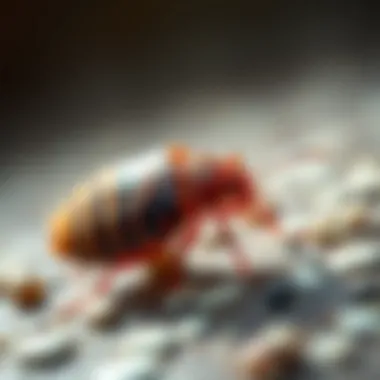
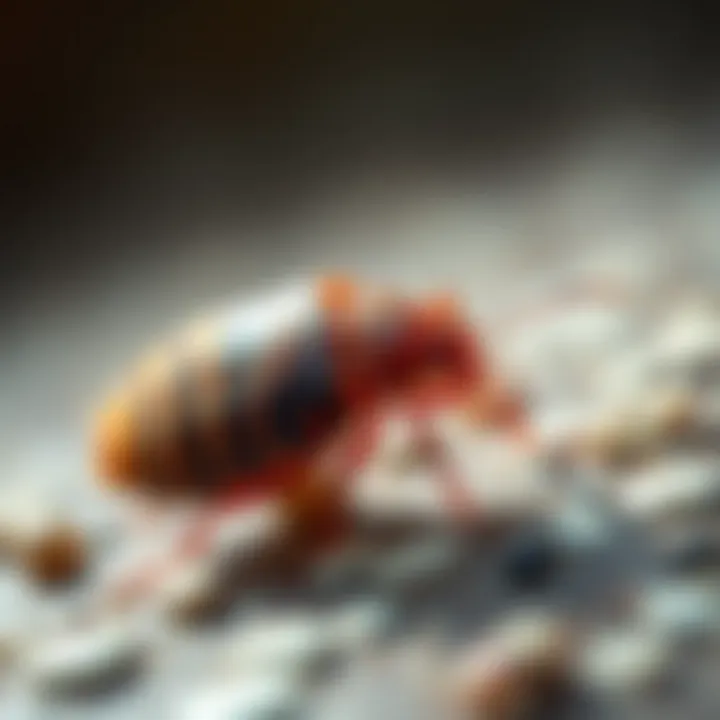
Insecticides play a pivotal role in the realm of pest control, particularly when tackling bed bugs. These chemically formulated products are designed to act swiftly on the insect, disrupting their nervous system and leading to mortality. Their key characteristic is their fast-acting nature, which can be a substantial advantage when an infestation poses immediate concerns.
One particularly noteworthy unique feature of many insecticides is their varying modes of action. Some disrupt the bed bug's hormonal systems, while others may simply suffocate them. This diversity in function allows for multiple approaches tailored to specific infestation scenarios. However, a significant disadvantage to consider is the potential for bed bugs to develop resistance to certain insecticides over time. This resistance can greatly undermine the long-term effectiveness of these treatments, creating a cycle of repeated application that may not yield the desired results.
Residual Powders
Residual powders, on the other hand, offer a different approach to bed bug control. These formulations remain effective long after application, providing a sustained kill effect that can last for weeks to months. This characteristic is exceptionally beneficial in situations where immediate eradication is not feasible, allowing for ongoing protection against re-infestation.
One unique advantage of residual powders is their ability to adhere to surfaces like cracks and crevices, where bed bugs often hide. This facilitates their effectiveness in various environments, especially in hard-to-reach areas of a home. However, a downside is that their application requires careful consideration of potential human and pet exposure. Effective use means finding a balance between coverage and safety, which can often be a complicated dance.
Heat Treatments
Professional Heat Treatment
Professional heat treatment is often considered one of the most effective methods for eradicating bed bugs. By raising the temperature of a space to levels that are lethal to these pests, it provides a thorough approach to extermination. The key characteristic of this method is its ability to penetrate deep into furniture, walls, and other potential hiding places, ensuring that no bugs escape.
This method’s unique feature is its non-reliance on chemicals, making it a favored option among those concerned about the toxicity of traditional pest control solutions. Nevertheless, a disadvantage is its dependence on professional execution; improper handling can lead to damage to property or, worse, ineffectiveness in removing the infestation entirely. The cost factor also plays into the decision-making process, as professional services can be a considerable investment.
DIY Heat Solutions
For those who prefer a hands-on approach, DIY heat solutions present an alternative. This method typically involves using appliances like steamers or portable heaters to target affected areas directly. The key characteristic of DIY heating is accessibility, as most homeowners have the tools on hand for initial treatment.
One unique feature of this approach is its flexibility, allowing treatment of specific areas without the need for extensive preparation. However, the downside lies in the limited reach; achieving the true lethal temperature throughout an entire space can be challenging. Moreover, the lack of training can often lead to ineffective methods, creating a false sense of security.
Alternative Control Methods
Vacuuming
Vacuuming is often overlooked, yet it offers a solid first step in any bed bug control strategy. The act of vacuuming can significantly reduce the number of visible bed bugs and their eggs, making it a valuable part of pest control efforts. Its key characteristic is its immediate impact, which can provide relief and a perception of cleanliness post-infestation.
One unique advantage of vacuuming is that it can be done frequently and doesn’t rely on chemicals. This makes it a beneficial option for households sensitive to chemical exposure. Still, it’s essential to recognize that vacuuming alone won’t eliminate an infestation. It is typically a supplemental measure rather than a standalone solution, albeit a useful one.
Steam Cleaning
Steam cleaning stands out as an effective alternative control method, using high-temperature steam to kill bed bugs on contact. The key characteristic here is the dual action—while it exterminates pests, it can also sanitize surfaces, which is great for maintaining hygiene. The penetrating heat reaches cracks and crevices, making it adept at eliminating bed bugs that standard cleaning methods might miss.
One compelling unique feature of steam cleaning is its ability to be used on a variety of surfaces, including bedding and upholstery, without needing chemical residues. However, the disadvantage comes from the need for special equipment and the potential for damage if not used correctly. The moisture involved must also be managed to prevent creating an environment conducive to mold or mildew.
How Long Does It Take for Bed Bugs to Die?
Understanding how long it takes for bed bugs to die is pivotal for anyone dealing with an infestation. It's not just a matter of counting days; it is about grasping the various factors that propel these pests into their grave, influencing pest control methods and ultimately impacting homeowners’ peace of mind.
When faced with a bed bug problem, knowing the duration of their mortality can steer the choice of treatment, the intensity of the attacks, and even the mental preparedness of the household. This insight can be used to plan the most effective counteractions, potentially saving time, and trouble down the line.
Moreover, by comprehending the timeframes linked with different eradication methods, homeowners can set their expectations realistically. They'll learn that sometimes underestimating continued monitoring and follow-up treatments can extend the process of achieving complete extermination. The outcome here is clearly binary: either a home is free from the biting nuisance, or it remains a battleground, with restless nights and health risks looming.
Timeframes for Different Kill Methods
The duration in which bed bugs succumb to various extermination methods varies markedly, influenced by the technique employed. Let’s break down some common methods and what can typically be expected:
- Chemical Treatments: Using insecticides can lead to bed bug deaths within a few hours to several days, depending on the specific product used and its application technique. Some chemicals could take longer, especially if the bugs are resistant to them.
- Heat Treatments: This method can be effective within a few minutes. If a home is exposed to temperatures over 120°F, bed bugs begin to die rapidly, often within just thirty minutes.
- Steam Cleaning: This also provides quick results, with steam applied directly to infested areas killing bed bugs within seconds upon contact. However, thorough application is necessary to reach all bugs effectively.
- Cold Treatments: Freezing bed bugs can take a bit longer, requiring several hours to ensure that all bugs are affected thoroughly. The right temperature, typically around 0°F, must be sustained for a sufficient period.
These varying timeframes highlight the need for strategizing pest management efforts meticulously. Homeowners should be wary of depending solely on one method without taking into account how those methods work with each other.
Factors Affecting Time to Death
It's essential to note that various elements can impact how long it takes for bed bugs to die, no matter the chosen method. Here are some significant factors:
- Age and Life Stage: Nymphs and adult bed bugs can react differently to treatments. Adults often display more resistance, and nymphs may be more susceptible to temperatures and chemicals.
- Environmental Conditions: Humidity and temperature have major effects. High humidity can prolong life spans by allowing bed bugs to retain moisture, thereby possibly increasing the time needed for certain treatments to be effective.
- Bug Resistance: Increased pest control failures can often be traced back to bed bugs that have developed resistance to specific chemicals. This resistance may cause treatments to take much longer to work, if they work at all.
- Exposure Duration: For many treatments like chemical and heat applications, how long the bugs are exposed to the method significantly affects the mortality rate. Short exposure can lead to incomplete eradication.
In summary, the timeline of bed bug mortality is convoluted, reliant on diverse variables. Every case is distinct, and homeowners should be equipped with knowledge for informed decisions, leading to effective control measures in their spaces. For more on pest control and management methods, the CDC offers substantial insights at CDC.gov.
"An informed approach to pest management is much more effective than simply guessing the duration of any given method."
The understanding of these dimensions could foster a more proactive attitude in controlling bed bug populations, ultimately resulting in better outcomes for homes afflicted by these frustrating invaders.
Case Studies and Testimonials
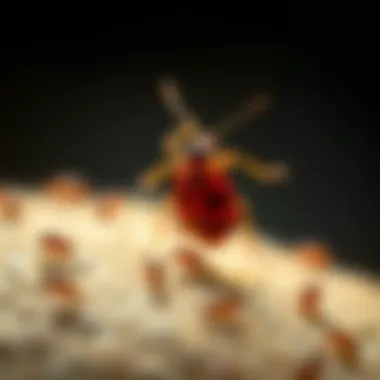
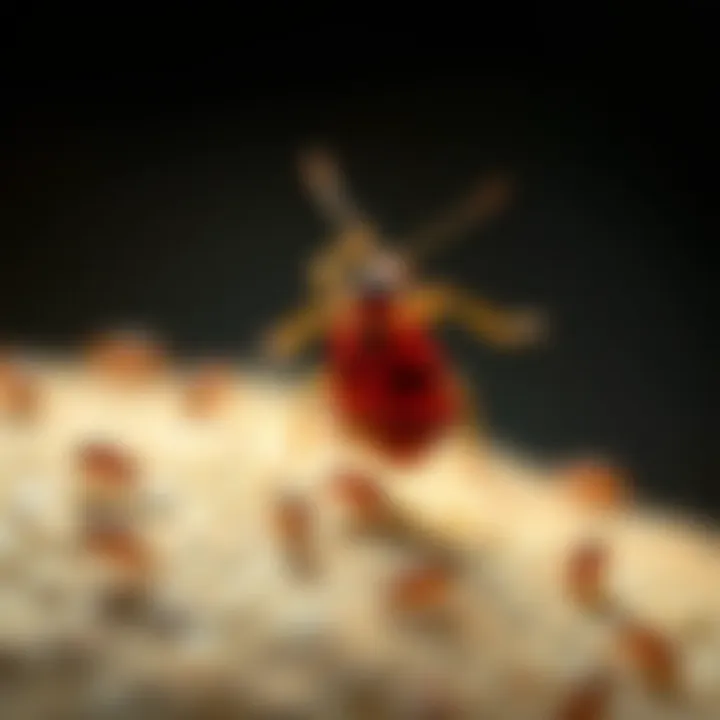
Case studies and testimonials add a real touch to the understanding of bed bug mortality. They shed light on practical experiences that people face when up against these pesky critters. This section dives into how various treatments performed in real-life scenarios and what lessons can be gleaned from these experiences.
Real-Life Experiences with Chemical Treatments
Chemical treatments have been a staple in pest control for years. Many homeowners have their own horror stories or success tales after using these methods. For instance, a recent case involved a family in Illinois who battled an infestation for months. They tried over-the-counter insecticides but found little success.
After consulting with a pest control professional, they switched to a licensed treatment. The results were markedly different; within two weeks, the bed bugs were significantly reduced. This case highlights the importance of using the right treatments—sometimes, what works for one household might not for another.
Moreover, homeowners reported discomfort with chemical residues lingering around their living spaces. This raised a significant concern about health safety and led many to think twice before opting for chemicals.
Success Stories Using Heat Treatments
Using heat as a method for eradicating bed bugs has gained traction. There’s a compelling success story from a family in New Jersey who used a professional heat treatment service. The process involved raising the room temperature to a level that bed bugs cannot withstand.
Within several hours, they had entirely eradicated the infestation. Reviewers of this method often highlight how it not only kills bed bugs but also eliminates their eggs. The family's anecdote emphasizes the satisfaction of finally regaining their peaceful sleep, which had been disrupted for months.
Besides killing the pests, the application of this method was noted to be quicker than traditional methods. Many felt relieved knowing they avoided chemical exposure during the treatment, which can be particularly significant for families with children or pets.
Lessons Learned from Ineffective Methods
On the flip side, there are plenty of lessons to be learned from methods that failed. One notable case involves a couple living in Massachusetts who resorted to DIY solutions, believing they could treat their home without professional help. They relied on homemade natural sprays made from ingredients like vinegar and essential oils.
To their dismay, the bed bug population increased instead of declined. This taught them a hard lesson: not every approach works universally. They eventually called in the experts but faced a more significant infestation because of the delay.
Another lesson learned is to combine different methods rather than relying solely on one. Many insightful testimonials emphasize a multi-faceted approach, where chemical treatments were enhanced with heat or vacuuming to ensure all life stages of the bed bugs were addressed.
"Sometimes, learning what doesn’t work can be just as valuable as knowing what does."
Throughout various case studies, a common theme emerges: an informed approach to bed bug management frequently leads to effective solutions. Homeowners are encouraged to research their options thoroughly and heed the wisdom from others who have walked this tricky path.
Culmination
Preventing Bed Bug Infestations
Preventing bed bug infestations is essential, particularly in light of their rapid resurgence in recent years. Bed bugs are not just a nuisance; they are persistent and can cause significant discomfort and distress to affected households. Staying ahead of these resilient pests is crucial for maintaining a safe and comfortable living environment. In this section, we will delve into effective prevention strategies that can minimize the risk of bed bug infestations and underscore the importance of early detection in combating their spread.
Key Prevention Strategies
- Regular Inspections Conducting routine inspections of your home, especially around sleeping areas, is a proactive measure. Look for signs like small brown spots on bedding or furniture, which may indicate bed bug excrement. Checking seams of mattresses and along baseboards can reveal bed bugs in their early stages.
- Proper Luggage Handling
When traveling, inspect hotel rooms carefully before unpacking your bags. Keep your luggage off the floor and on a hard surface. Using luggage racks can reduce the chances of bringing these hitchhikers back to your home. - Decluttering
Clean up clutter in your home. Piles of clothes or other items can provide harborage for bed bugs. The less clutter, the easier it is to spot and eliminate these insects before they become a larger problem. - Protect Mattress and Box Spring
Investing in high-quality mattress and box spring encasements can prevent bed bugs from establishing a home in your bedding. These encasements trap any existing bugs and prevent new ones from getting in. - Sealing Cracks and Crevices
Close gaps in walls, floors, and furniture to minimize potential hiding spots. Use caulk or similar materials to seal cracks, ensuring that bed bugs have fewer opportunities to find shelter. - Maintaining Regular Cleaning
Frequent vacuuming, particularly in bedrooms and communal areas, helps reduce the likelihood of an infestation. Pay special attention to edges and corners where bed bugs like to lurk. After vacuuming, ensure the vacuum bag is disposed of properly.
By implementing these strategies, homeowners can significantly mitigate the risk of an infestation, saving themselves from the financial and emotional toll these pests can exert.
Importance of Early Detection
Recognizing the signs of a bed bug presence early can mean the difference between a minor inconvenience and a full-blown infestation. Early detection helps in managing their spread and drastically reduces the costs associated with pest control treatment. It is essential to educate household members about what to look for.
"An ounce of prevention is worth a pound of cure."
Identifying bed bugs in their early stages allows for quicker and often less costly interventions. The average household might not realize that these pests can multiply rapidly; a single female can lay hundreds of eggs over her lifetime, making timely detection pivotal.
Moreover, personal comfort and peace of mind can be severely impacted by bed bug bites and the psychological stress of knowing these pests are present in your living quarters. Thus, establishing a protocol for early detection should be a priority. Consider keeping a checklist of tell-tale signs so that everyone in the household can contribute to maintaining vigilance.
Overall, by adopting keen observation practices and maintaining a proactive stance, homeowners can create a strong defense against bed bug infestations, leading to a healthier and more pleasant living environment.
The End
In wrapping up our exploration of bed bug mortality, it’s essential to reflect on the significance of the various factors affecting their lifespan. Understanding these elements can significantly bolster a homeowner's or pest control professional's efforts in managing infestations. Beyond just numbers and statistics, it's about the quality of life in one’s home, the peace of mind that comes with effective pest management, and the financial implications of eradication efforts.
The integration of knowledge concerning interventions—like thermal treatments and chemical strategies—further illuminates the pathways toward reducing bed bug populations. As highlighted throughout the article, each method's efficacy depends not solely on the treatment itself but also on environmental conditions, such as temperature and humidity.
Summary of Key Findings
Several crucial takeaways emerge when considering bed bug mortality:
- Environmental Influence: Temperature plays a pivotal role in the mortality rates of bed bugs. Extreme heat can kill them within minutes, while cooler conditions allow them to survive longer.
- Starvation Effects: Bed bugs are quite resilient. They can endure without a blood meal for weeks, sometimes even months, depending on the stage of their life cycle. This ability complicates eradication efforts, as unseen bugs can survive treatment.
- Treatment Methods: Different pest control methods come with varying success rates. Chemical treatments, while effective, may be less reliable due to insect resistance. Heat treatments, on the other hand, provide a more definitive timeframe for mortality.
- Prevention is Key: Understanding the life cycle stages and taking proactive measures can help minimize infestations before they begin, highlighting the importance of regular monitoring and detection strategies.
Final Thoughts on Bed Bug Management
Navigating the complexities of bed bug management requires more than a surface-level understanding of these pests. It demands a comprehensive approach that includes recognizing the unique challenges they pose and employing a combination of methods tailored to specific situations. As the battle against these pests evolves, continuous adaptation and the adoption of new strategies will be crucial.
Homeowners and pest management professionals alike must remain vigilant and informed. Knowledge is power when it comes to dealing with bed bugs. By familiarizing oneself with the critical aspects of their life cycle, behaviors, and effective treatment options, one can turn the tide against these unwelcome guests.
"The best defense is knowing your enemy."
Ultimately, investing time in understanding how long it takes for bed bugs to die, the factors affecting their mortality rates, and legitimate prevention strategies reinforces not just a pest-free living space but also a serene home environment.



